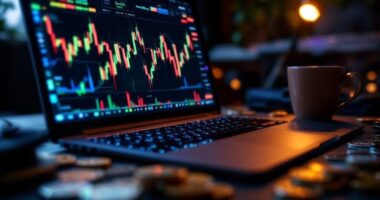When entering the cryptocurrency market, new users face a pivotal decision: should they HODL their assets for the long term or plunge into the fast-paced world of active trading?
This choice greatly impacts not only potential returns but also risk exposure and lifestyle requirements.
The HODL strategy—crypto slang for “hold on for dear life”—represents the “set it and forget it” approach.
HODL isn’t just a misspelling—it’s a mindset, embracing volatility while letting time work its magic on your crypto investments.
Like planting a tree rather than picking flowers, HODLers purchase crypto assets and maintain their positions through market fluctuations, requiring minimal analysis and management.
This approach demands only basic market understanding, making it particularly accessible for beginners who may lack technical trading skills.
HODLers typically ride through entire market cycles, which in cryptocurrency typically last 3-4 years including both bull and bear phases.
Active trading, by contrast, requires continuous market monitoring and rapid decision-making.
Think of it as the difference between marathon running and sprint racing—both can get you to a destination, but they demand vastly different energy expenditures and skill sets.
The barriers to entry are considerably higher, with traders needing advanced market knowledge and significant time commitments. Success largely depends on analyzing technical indicators and historical price patterns.
Day traders typically need to commit to active monitoring throughout trading hours to capitalize on short-term price movements.
From a risk perspective, HODLing typically presents lower overall exposure to market swings.
While long-term holders endure the same volatility as traders, they’re less likely to make emotion-driven decisions during temporary downturns.
Active traders face constant exposure to price volatility, where a single poorly-timed move can greatly impact portfolio value.
The financial equation also favors HODLing for newcomers.
Long-term holders incur minimal transaction costs and potentially more favorable tax treatment on long-term capital gains.
Active traders face death by a thousand cuts—exchange fees, slippage, and higher tax rates on short-term gains all diminish returns.
Perhaps most importantly, data suggests most inexperienced traders underperform patient holders after accounting for fees and timing errors.
While active trading dangles the carrot of quick profits during market swings, HODLing capitalizes on the historical upward trajectory of established cryptocurrencies, allowing compound growth over multiple market cycles without requiring a professional trader’s skill set or schedule.









